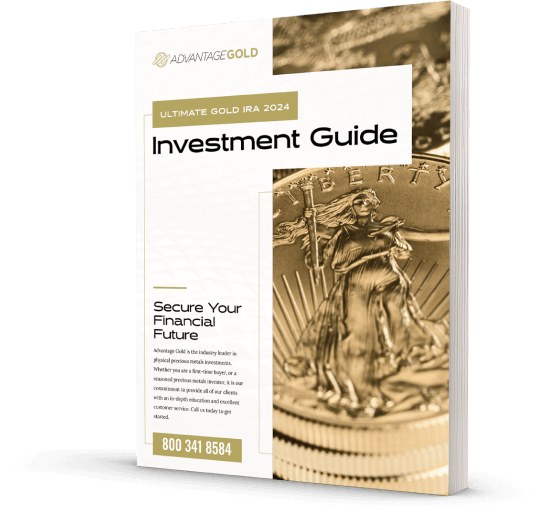
You’ve probably done your investor homework on Gold IRAs, but did you know there are alternative ways to invest in precious metals?
Precious metals mutual funds are investment vehicles that pool funds from multiple investors at once. These mutual funds then purchase a diversified portfolio that includes actual precious metals or companies that work in the industry. Unlike other methods of buying physical metals, mutual funds provide exposure to the metals market via a managed approach. This differs from a self-directed IRA, which gives you control of what you purchase.
Let’s explore the basics of precious metals mutual funds. We’ll discuss why they make sense for some investors and when a different method—like precious metals IRAs—might be more attractive.
While physical gold investment is still a popular method, precious metals mutual funds do offer benefits that appeal to seasoned and novice investors alike. The funds provide a practical avenue to investment diversity. They can also provide liquidity and accessibility to the precious metals market.
One primary advantage of precious metals mutual funds is the opportunity they afford investors to diversify their holdings. By pooling resources to invest in various precious metals and related companies, these funds arguably spread out risk more effectively than investing in a single asset.
Precious metals mutual funds often provide higher liquidity than physical ownership of those same metals. Investors can typically buy or sell their fund shares quickly—often within a single trading day—allowing for easy entry and exit from positions.
This liquidity is especially helpful during stressful market periods or when an investor needs quick access to cash. Contrast that with the process of selling physical metals, which often involves extra roadblocks like the need to verify the authenticity of the metal and significant transaction fees.
Precious metals mutual funds lower the barrier to entry for investors who want to enter the market. Buying physical gold, silver, platinum, or palladium can require significant capital. Putting smaller amounts in mutual funds makes it more feasible for a broader range of investors to include metals in their portfolios.
Buying physical precious metals also involves paying additional fees for storage and insurance. Mutual funds don’t have this same drawback because there’s no physical ownership of gold or silver coins. Finally, mutual funds offer the expertise of fund managers who can help navigate the precious metals market. This can be a value-add for investors who lack the time or experience to manage these investments directly.
Precious metals mutual funds and Gold IRAs are both popular options that provide a hedge against inflation and economic volatility. But there are some critical differences between the two that investors need to understand before making a purchase:
A grasp of these key differences can help you choose the option that best suits your investment strategies, financial goals, and preference for physical versus paper assets.
Precious metals mutual funds and Gold IRAs provide exposure to the precious metals market, but knowing which one makes the most sense for your investment needs can be a major question. Gold IRAs provide the peace of mind of physical metals ownership through coins, bars, and bullion.
To learn more about how precious metals can help diversify your investment portfolio, download Advantage Gold’s free Gold IRA guide. This guide covers the basics of self-directed precious metals IRAs and how to roll over your existing retirement assets. If you already know a Gold IRA makes sense for your investment goals, apply to open your account today.

Please note that Advantage Gold and its representatives are not licensed or registered investment advisers, attorneys, CPA’s or other financial service professionals. We do not offer or render any legal, tax, accounting, investment advice or professional services. Additionally be aware that precious metals carry risk of loss and are not a suitable investment for everyone. Past performance is not necessarily indicative of future results and you should always consult your financial and tax professional and carefully evaluate all risks associated with the acquisition of precious metals before making the investment.
The statements made on this website are opinions of Advantage Gold LLC. Past performance is not necessarily indicative of future results. Precious metals, Gold American Eagles, Proof Gold American Eagles, certified gold coins, as well as gold and silver bars carry risk and investing in precious metals directly or through an IRA is not suitable for all investors. Precious metals and coins (i.e. Canadian Gold Maples, Canadian Silver Maples, American Gold Eagles, American Silver Eagles, Proof Gold American Eagles, Proof Silver American Eagles, Certified Gold American Eagles, Numismatic Gold Coins) may appreciate, depreciate, or stay the same depending on a variety of factors. Precious metals can and will fluctuate unexpectedly. Advantage Gold cannot guarantee, and makes no representation, that any metals purchased (i.e. .999 gold bars, .9999 silver bars, or any gold coins) will appreciate at all or appreciate sufficiently to produce a profit above and beyond the mark up/ commissions charged whether they are bought for direct delivery or inside of a precious metals IRA. The decision to purchase or sell precious metals with cash or inside of a Gold IRA or a Gold Backed IRA, and which precious metals to purchase or sell, are the customer’s decision alone, and purchases and sales should be made subject to the customer’s own research, prudence and judgment. By accessing any Advantage Gold content, you agree to be bound by the terms of service. Review the terms of service and privacy policy.
*Consult your tax Advisor.